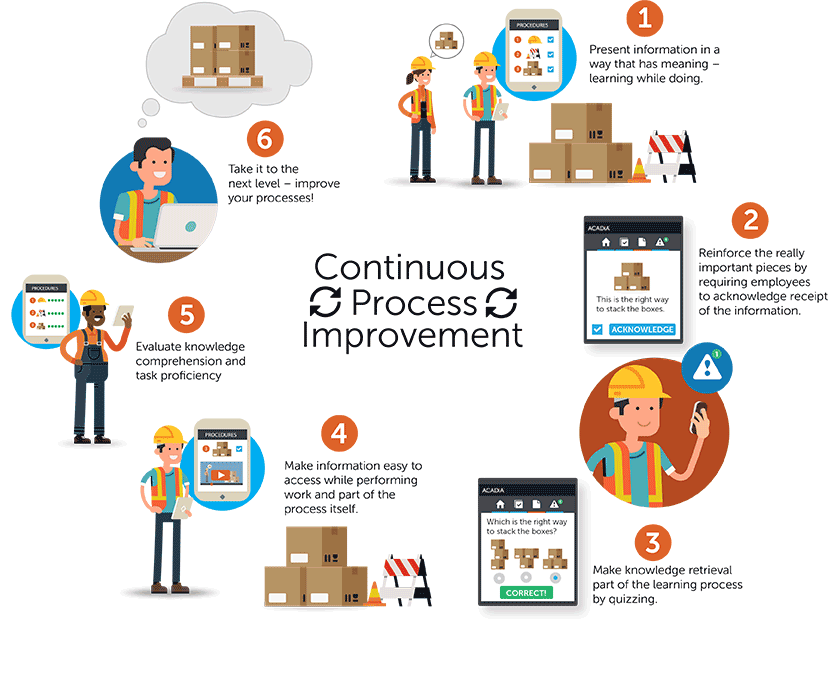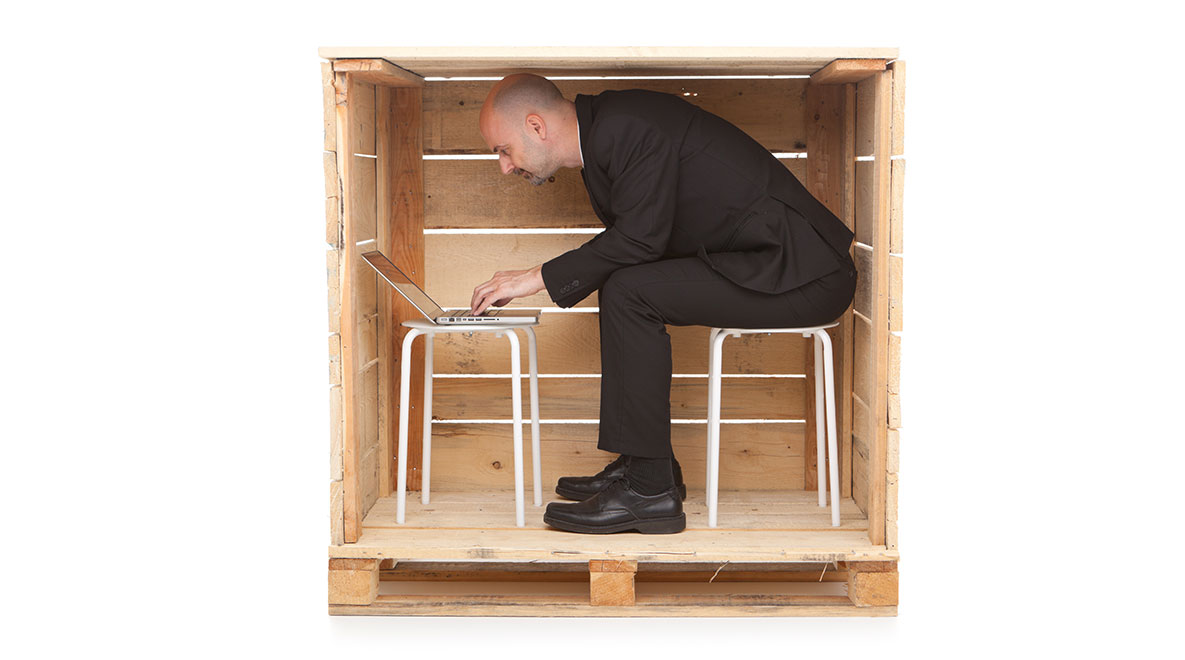The simple and powerful employee training tool you’re probably not using
How Employee Training Quizzes Improve Process Knowledge and Retention
- Quizzing is a powerful way to embed into employee training for long-term memory.
- Employees who know their jobs inside and out are more comfortable in their work, stay in their positions longer, and help improve processes over time.
- Quizzing should be used in conjunction with a larger behavior change program.
- We can change employees’ behavior when we make it easier to perform work the right way, every time.

Love him or hate him, few NFL head coaches are more recognizable than Bill Belichick. Wearing his signature sweatshirt with the ripped off arms, Belichick is known for bringing two decades of success to the New England Patriots. He’s also known for being hardnosed and curmudgeonly.
One of the things that contributed to that reputation among his players was his pregame pop quiz.
“I would hate to walk by him in a hallway on a Thursday if I was unprepared,” said Heath Evans, former Patriot fullback.
“He’s stopping and asking me about a player on special teams. ‘Can he wiggle? Who did he match up against last week on kickoffs and how did he win that matchup?’ There’s no limit to the knowledge Bill expects you to have on an opponent…”1
It was reportedly very awkward for players who didn’t have the answer. Beyond looking bad in front of their boss and colleagues, it could sometimes earn them a study session in Belichick’s office the next morning.
But the point of the exercise wasn’t to embarrass players. Belichick was deploying quizzing as a very simple, very effective employee training technique—one that made information stick. Because the better you know something, the less time you spend thinking about what you need to do and the more you simply execute.
Quizzing isn’t just a way to gauge how much information was successfully inserted into your brain. It’s also a powerful way to help you remember what you’ve learned and embed it into your long-term memory.
Employees who know their jobs inside and out are not only safer and more efficient. They are more comfortable in their work, they stay in their positions longer, and they help improve systems and processes over time. So, there is tremendous value in helping employees get important process information into their heads. But even more valuable is whether process information can also be pulled out of their heads in the form of accurately performed tasks.
Practicing retrieval to cement processes
The “testing effect”2 is a much-observed phenomenon of learning that shows repeated retrieval of information enhances long-term retention.
This isn’t only true for school students either. We don’t magically start learning differently as we get older, and there’s a ton of value in continuing to exercise our minds in ways similar to how we learned as children.
Sometimes when we’re training employees, we focus too much on explaining how to do something and not enough on making sure the knowledge has successfully transferred. i.e. If they don’t remember what they trained on, they’re not going to do their job correctly.3
Good training and workplace learning should balance exposure to new information — processes, systems, techniques, strategies, etc. — and helping people apply that information to their work.
Periodically retrieving knowledge increases our ability to recall and remember it. What’s more, retrieval solidifies learning even further when feedback is provided.4
In other words, if we learn something and then are quizzed on what we’ve just learned, we’ll be better at using that information in the future. If we’re also provided with feedback on our quiz results, we’ll perform even better the next time the information is required.
Learning is not just rote memory, though memory clearly plays an important role. We don’t want our employees to simply remember what we’ve trained them to do. We want them to understand why it’s important to do things in that One Best Way that we’re training them on. We want them to consider the safety implications of not doing it the right way, or the headache of having to do the work over and over again.
“We don’t get information into memory just to have it sit there. We get it in to be able to use it later. … And the actual act of retrieving the information over and over, that’s what makes it retrievable when you need it.”5
– Roddy Roediger, psychology professor, Washington University in St. Louis and one of the most cited researchers on this phenomenon.
While nobody knows exactly how the retrieval function of the brain works, one theory is that recalling information from our vast memory is a challenge for the brain. Practicing retrieving information as we learn works in effect to ‘grease the wheels of memory’.5
Will quizzing work for everyone? Not necessarily.6 Some people are just poor test takers and may respond poorly in the moment. But we can help them too. Keep the stakes low. Just using the word quiz can create a feeling of unease in many of us. There is an inevitable feeling of being judged right or wrong, good or bad, adequate or inadequate based on the performance given. 4 It’s important that employees understand that quizzing is there to help reinforce their learning, not as a way to trip them up or hold them responsible to unrealistic expectations.
Deploy employee training quizzing as part of a larger behavior change program
Quizzing in and of itself is not the answer to employee behavior change. It’s only one piece of a larger employee training process that helps team members succeed. How do we help employees learn and cement One Best Way work practices in place? It helps to understand how the brain works, how we process and recall information.

- Present information in a way that has meaning – learning while doing is considered to be one of the most effective ways to pick up new skills. It reinforces the activity by physically performing it rather than simply imagining it as you would in a traditional classroom setting.
- Make clear the value of the information and its importance to the employee – reinforce the really important pieces by requiring employees to acknowledge receipt of the information. It makes them responsible for the information in a way that just telling them doesn’t.
- Make knowledge retrieval part of the learning process – steps one and two are focused on getting knowledge in, step three reinforces it by seeing what knowledge we can get out. This is also an opportunity to check in and identify employees who may need more support.
- Make information easy to access while performing work and part of the process itself – everything employees see during the training process should be available to them as they do the work. What’s more, they should be required to follow the steps of the process precisely as they were taught. And managers should be able to report on this.
- Confirm knowledge comprehension and task proficiency – formally evaluating employees on their ability to perform their work in the One Best Way helps you identify who has the knowledge they need and who needs more support.
- Take it to the next level – improve your processes! When employees have fully adopted your One Best Way work process, they will perform them that way as second nature. This is where the magic happens, and employees begin to uncover even better ways to perform their work. Make sure you have a way to capture these ideas as part of workflow.
We can change employees’ behavior when we make it easier to perform work the right way, every time. When everyone follows the One Best Way, opportunities to improve come to light. Solid processes and systems make it easier for those good ideas to be incorporated and continuous improvement is now a natural part of work.
Helping our most at risk employees
Building formal processes around training and learning that are based on science can have an incredible impact on your workforce. It is particularly helpful as a safety net for your most vulnerable employees – those who aren’t performing as required and who are most likely to quit, become injured, or do something that causes them to lose their job.
One of our customers uses Acadia to consistently provide excellent customer service through its call centers. After establishing One Best Way procedures and deploying them out to the team, they were able to see which employees referenced the procedures regularly and which ones didn’t.
Those who didn’t reference the procedures were more prone to making mistakes and provide poor customer service. Typically, these lower-performing employees would continue to struggle until they became so uncomfortable that they would quit or make mistakes that would require their removal.
Managers, with the help of Acadia, have begun a new employee training program to provide more support to these employees. When team members are identified by making mistakes and not accessing the procedures that would have helped them prevent the mistakes, they receive targeted content that they are required to acknowledge.
The targeted content describing correct processes will be followed up with quizzing that further reinforces the information and confirms knowledge comprehension. Managers can then determine if further training or coaching is needed.
While this is a long-term process meant to boost employee retention, early indications are that employees targeted to receive additional support are already showing changed behavior and improved performance.
Sources
- Bill Belichick’s quizzes can be a terrifying experience, report says – The Boston Globe
- Retrieval practice (the “testing effect”)
- What Works in Training: Retrieval Practice
- Test-enhanced learning: Using retrieval practice to help students learn
- Studying With Quizzes Helps Make Sure the Material Sticks
- Who Really Benefits from Retrieval Practice
- The Power of Retrieval Practice For Learning
- Enhancing workplace digital learning by use of the science of learning
Ready to crush your goals?
"*" indicates required fields


